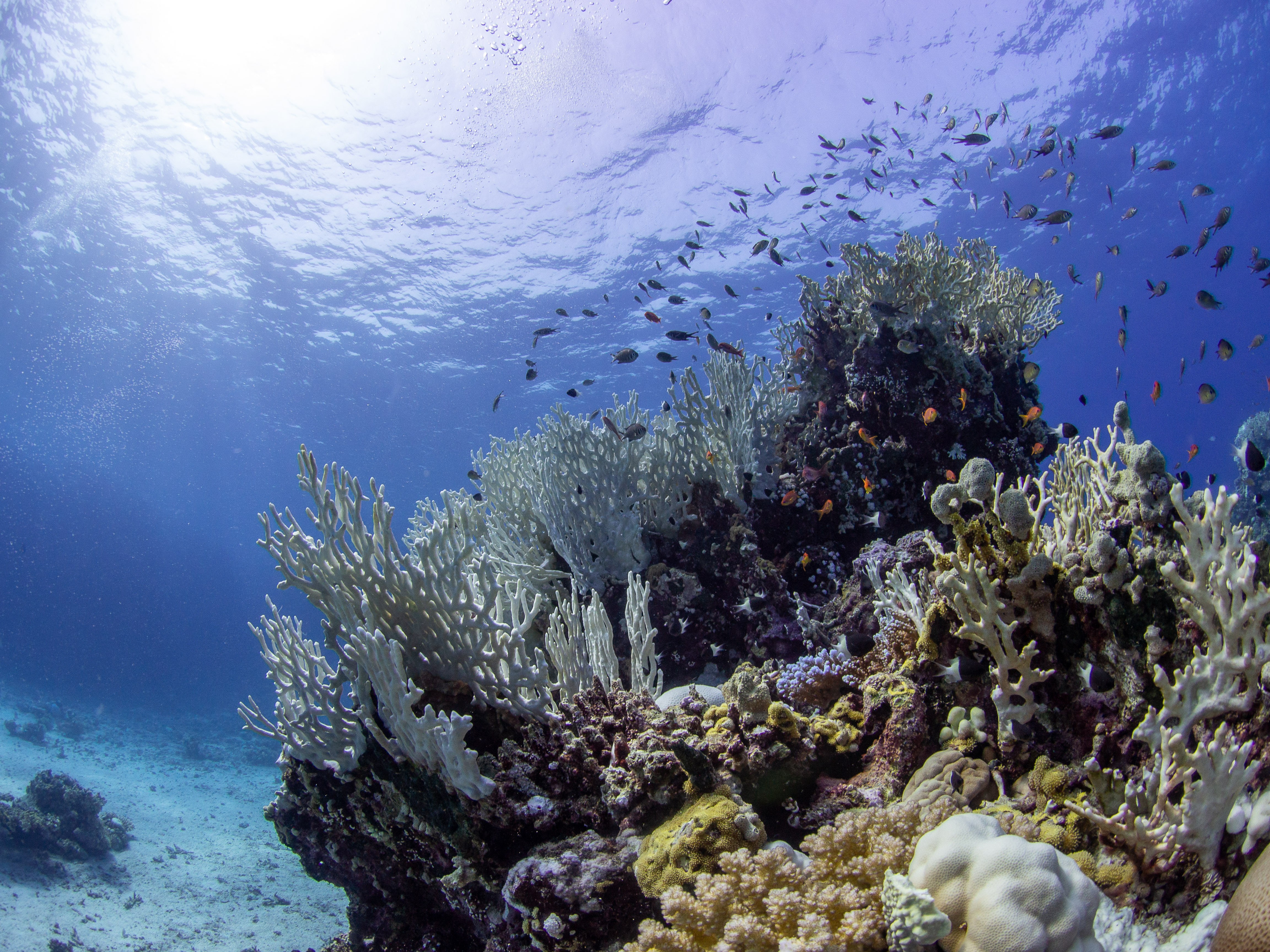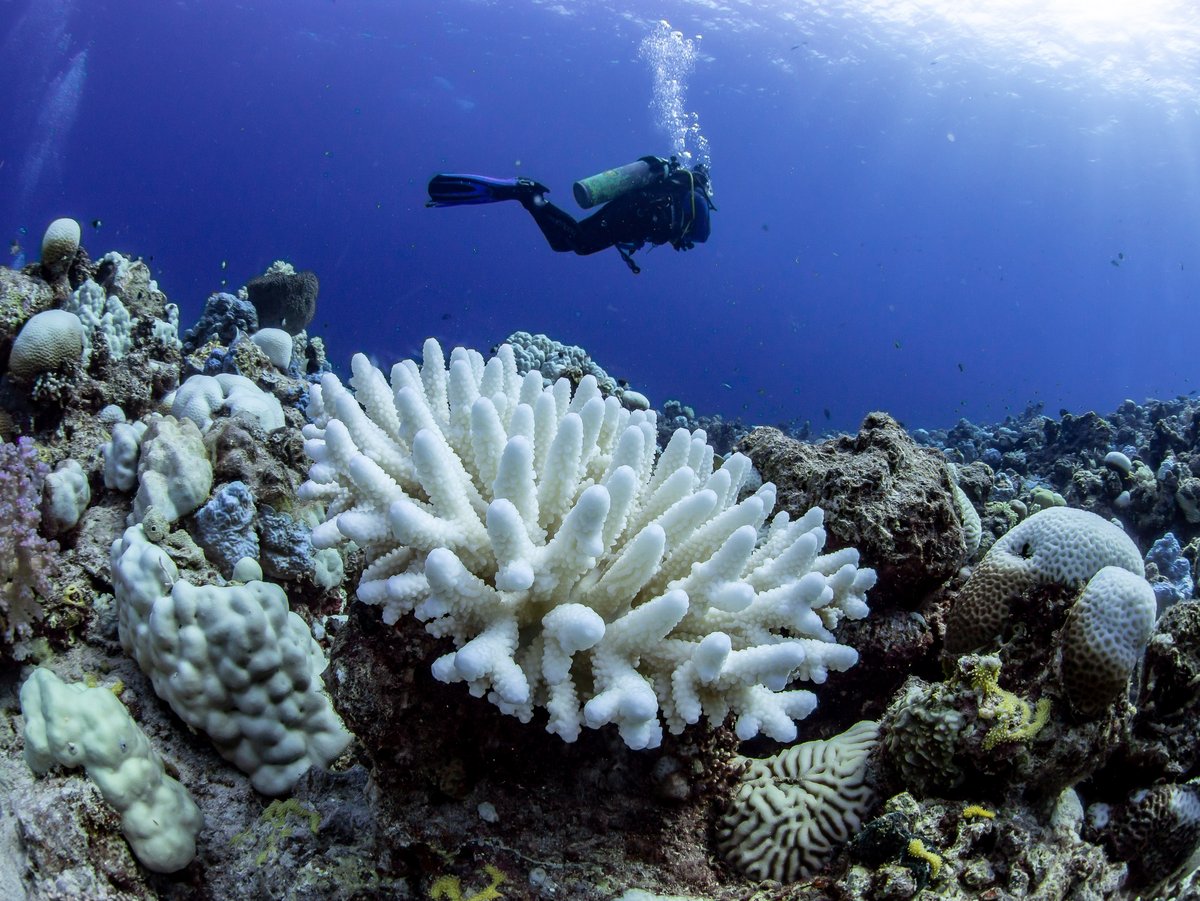
Corals starve before they bleach
New findings on coral bleaching: University of Konstanz study shows that corals suffer from nutrient deficiency before they bleach
Coral bleaching currently precedes a massive loss of coral worldwide. As the result of climate change, coral take on a milky-white colour, absorb too few nutrients and eventually starve. In particularly warm years, “graveyards” of bleached coral show up in the Pacific that often spread for kilometres. While studying the causes of coral bleaching, a research team led by Konstanz biologist Professor Christian Voolstra determined that the coral already begin to starve before the actual bleaching occurs. The cause of coral death is rather a disruption in the symbiosis between corals and algae that starts long before the paling begins. “Coral starvation doesn’t start upon bleaching, it’s much more the final manifestation of an imbalance in nutrient exchange between corals and symbiotic algae,” Voolstra explains. The research results currently published in the PNAS journal could mean a paradigm shift for preventing coral bleaching.
What happens during coral bleaching?
Corals live in symbiosis with photosynthetic algae. A nutrient exchange occurs between the corals and algae, in which the algae share a portion of their photosynthetically fixed carbon in the form of sugars with the corals (their hosts). Researchers have known that this exchange stops during coral bleaching: The corals reject their symbiotic algae as a consequence of the increasing water temperature caused by climate change. As a result, they no longer receive nutrients from the algae and starve. It had long been assumed that the rejection of algae, and hence the ceased metabolite transfer, was the proximate cause of coral starvation that follows bleaching.
Based on this study, however, the exchange of nutrients between corals and algae has already been disrupted before the coral reject their symbiotic algae. Christian Voolstra and his team were able to demonstrate that corals are already starving, even before the first symptoms of coral bleaching emerge. “It’s the classic question of the chicken and the egg,” Christian Voolstra says: “Is coral bleaching the cause or the effect of starving corals? We found clear indications that the nutrient deficiency did not first occur after the coral rejected their algae and bleached, but that the exchange of nutrients had been disrupted beforehand. The corals are already starving when they begin to bleach.”
What happens before the coral bleach?
In their study, Christian Voolstra and his team examined the biological processes that take place before coral bleaching begins – and before the first symptoms of paling emerge. The biologists used an aquarium setup to simulate the environmental conditions that lead to coral bleaching in the oceans and analyzed the molecular processes by which corals and their symbiotic algae respond. The results: At higher water temperatures, both the corals and the algae required more nutrients for themselves – and they stopped sharing these nutrients with their symbiotic partners. “They become ‘selfish’ and keep the nutrients for themselves. The algae do not feed their host anymore and the symbiosis is disrupted,” says Nils Rädecker, lead author of the study. “The problem thus does not start when the corals reject their algae, but earlier, when the exchange of nutrients between them ceases.”
Consequences for saving the corals
“For our work, this means: If we want to save the corals, it is not enough to try to stabilize bleached coral reefs. The reefs need help before the corals bleach,” says Christian Voolstra. These new findings also provide good orientation for identifying at-risk coral reefs: “By now, we know the environmental parameters very well that disrupt the symbiosis between corals and algae. Polluted water with high nitrogen levels put corals at particularly high risk,” states Nils Rädecker. “Malnourished corals release ammonium. This means that elevated ammonium levels in the water at or near the coral reefs themselves could be a good indicator for at-risk reefs, even before the bleaching starts.”
Key facts:
- Original publication: Heat stress destabilizes symbiotic nutrient cycling in corals, Nils Rädecker, Claudia Pogoreutz, Hagen M. Gegner, Anny Cárdenas, Florian Roth, Jeremy Bougoure, Paul Guagliardo, Christian Wild, Mathieu Pernice, Jean-Baptiste Raina, Anders Meibom, Christian R. Voolstra, Proceedings of the National Academy of Sciences Feb 2021, 118 (5) e2022653118; DOI: 10.1073/pnas.2022653118
Link: https://www.pnas.org/content/118/5/e2022653118 - Study led by Professor Christian Voolstra, Professor of Genetics of Adaptation in Aquatic Systems at the University of Konstanz, on the biological processes that precede coral bleaching
- The exchange of nutrients between corals and their symbiotic algae is disrupted, even before the corals reject their symbiotic algae and begin to bleach
- Research conducted in collaboration with: King Abdullah University of Science and Technology (KAUST), University of Technology Sydney (UTS), University of Western Australia (UWA), École polytechnique fédérale de Lausanne (EPFL)
- Research funded by: German Research Foundation (DFG), Swiss National Science Foundation (SNF), King Abdullah University of Science & Technology (KAUST)


